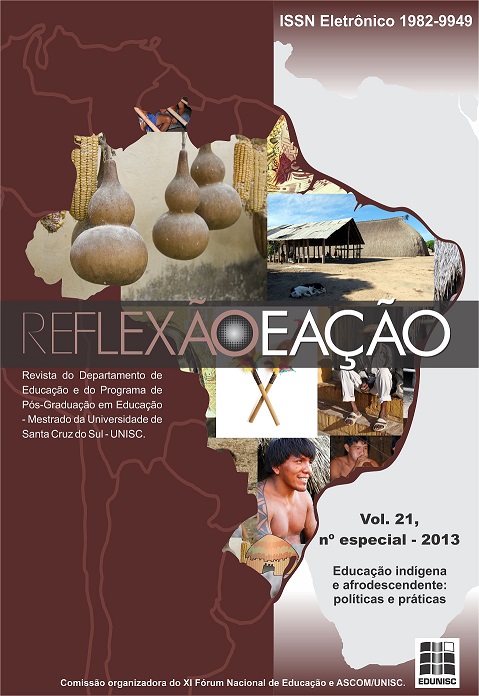EARLY CHILDHOOD AND RURAL EDUCATION: A NECESSARY MEETING AIMING THE ACHIEVEMENT OF JUSTICE WITH YOUNG CHILDREN LIVING IN RURAL AREAS
DOI:
https://doi.org/10.17058/rea.v0i0.3388Keywords:
Educação Básica, Educação Infantil, Educação do Campo, Creche, Pré-EscolaAbstract
Over the past 40 years the Brazilian government has constituted a major basic education attendance programmed for Brazilian citizens. The 1988 Federal Constitution states the right to education for all Brazilians, whether living in rural or urban areas, and it set kindergarten as the first level in basic education, it constituted a space to be filled by a large contingent of children who, until then, were without an institutional educational space guaranteed for them. Although, the kindergarten coverage in large urban centers has been effective in numerical terms, especially, regarding the pre-school provision, in rural areas this is still not a reality. IBGE (Brazilian Institute of Geography and Statistics - Demographic Census, 2010) reports that Brasil has 16,044 children under 6 years old, in other words, 12% of the total population of Brazil, 3,546 are living in rural areas. According to INEP (National Institute of Educational Studies - School Census, INEP, 2010), from the universe of children aged 0-6 years living in rural areas, only 12.1% attend day care centers and 67.6% attend preschools, a value lower than the urban areas where the coverage is 26% for attendance to day cares and 83% for attendance to pre-school classes. Besides questioning the exiguity of this coverage, especially from the point of view of the mandatory provision of pre-school, it is necessary to map the points of connection and tension between the areas, so it would be possible to give an expansion linked to a qualified and contextualized offer.Downloads
Downloads
Published
How to Cite
Issue
Section
License
The submission of originals to this journal implies on the transference, by the author(s), of the printed and digital publishing rights. The author´s rights to the published articles are the author´s, the journal has the rights over the first publication. The author(s) can only use the same results in other publications, indicating clearly that this journal was the original publisher. Since we are an open access journal, the free use of articles is permitted for educational and scientific applications, as long as they inform the source according with the CC-BY license from Creative Commons.


